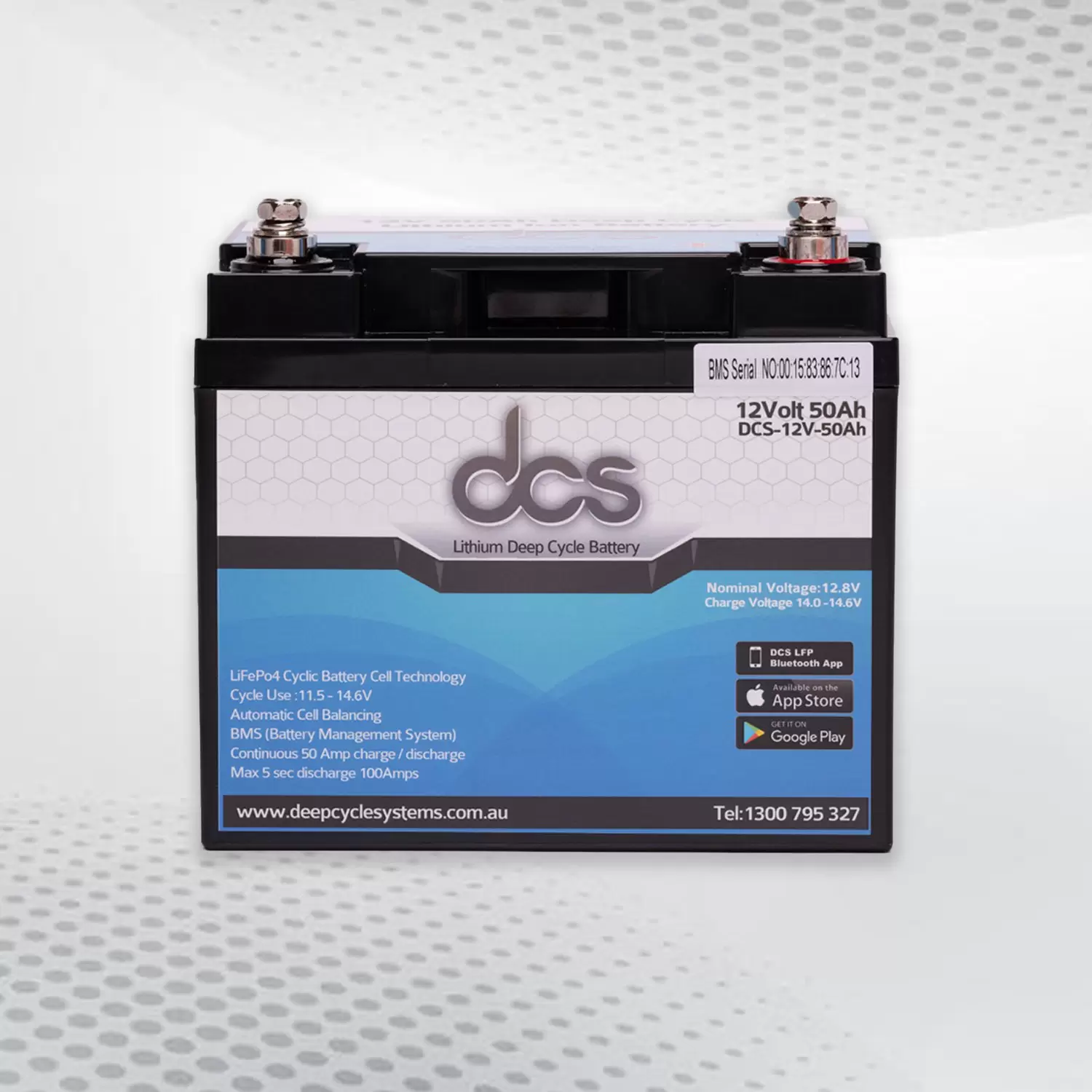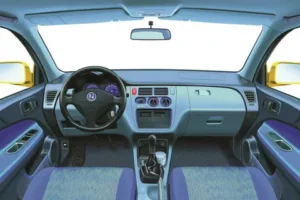In today’s fast-paced world, the demand for efficient and reliable power systems is higher than ever. Whether it’s for powering your caravan, running marine applications, or providing backup power to your home, having a robust battery solution is essential. A 50Ah battery lithium offers a superior alternative to traditional lead-acid batteries, providing higher efficiency, longer lifespan, and enhanced performance. This blog post delves into how a 50-Ah lithium battery can maximise the performance of your power systems, ensuring you get the most out of your energy investments.
Understanding the Basics of 50-Ah Lithium Batteries
A 50-Ah lithium battery uses lithium-ion technology and is rated at 50 ampere-hours, indicating its capacity. This means the battery can deliver 50 amps for one hour or 1 amp for 50 hours. Lithium batteries are favoured for their high energy density, lightweight nature, and low self-discharge rates.
They are highly efficient and provide a more sustainable solution than traditional batteries. Their lightweight design and longer lifespan make them suitable for various modern applications, such as caravans, marine use, and backup power systems. This efficiency in energy utilisation translates to less wasted energy, which benefits both the environment and your energy needs.
Advantages of 50-Ah Lithium Batteries Over Traditional Batteries
50-Ah lithium batteries offer several advantages over traditional lead-acid batteries, making them an increasingly popular choice for various applications. One significant benefit is their superior energy density, allowing more power storage in a smaller, lighter package. This feature is particularly advantageous for portable applications like RVs, boats, and off-grid systems.
Another advantage is the longer lifespan of lithium batteries. They can typically endure more charge and discharge cycles, often exceeding 2,000, compared to the 300-500 cycles standard in lead-acid batteries. This longevity translates to lower replacement costs over time and reduced environmental impact.
50-Ah lithium batteries have faster charging capabilities, allowing users to recharge their systems quickly and efficiently. Unlike traditional batteries, which can take hours to charge fully, lithium batteries can often reach total capacity in a fraction of the time. Furthermore, lithium batteries are more efficient, with minimal energy loss during charging and discharging. This efficiency means users can get more usable power from their batteries.
Applications of a 50 Amp Lithium Battery
A 50-amp lithium battery is versatile and ideal for various applications due to its compact size, high energy density, and reliable performance. Here are some typical applications where this battery excels:
- Solar Energy Storage: A 50 amp lithium battery is widely used in solar energy systems for storing excess energy generated by solar panels. This enables users to access power during non-sunny periods, making it an essential component of off-grid and backup solar setups.
- Recreational Vehicles (RVs) and Marine Use: Many RV and boat owners prefer a 50-amp lithium battery to power onboard electronics and appliances. Its lightweight nature and resistance to vibrations make it suitable for mobile applications where reliability is crucial.
- Electric Vehicles: In smaller electric vehicles, such as scooters, golf carts, and mobility aids, a 50-amp lithium battery provides the necessary power while keeping the overall weight down, enhancing performance and efficiency.
- Portable Power Stations: These batteries are commonly found in portable power stations. They provide a reliable source of energy for camping, outdoor activities, or emergency situations. Their fast charging capabilities make them convenient for on-the-go use.
- Backup Power Supply: A 50-amp lithium battery can be integrated into home or commercial backup power systems, ensuring a steady electricity supply during outages. Its longevity and efficiency make it a dependable choice for critical applications.
Deep Cycle Capabilities of 50-Ah Batteries
The deep cycle capabilities of 50-Ah batteries make them an excellent choice for applications requiring sustained energy output over extended periods. Unlike traditional lead-acid batteries that deliver quick bursts of energy, deep-cycle lithium-ion batteries are designed to be discharged and recharged repeatedly without significant loss of capacity. This feature is particularly advantageous for users who rely on these batteries for off-grid systems, renewable energy storage, or recreational vehicles.
With a 50-Ah capacity, these batteries can provide a reliable power source for various devices, ranging from small appliances to lighting systems. They can discharge a significant percentage of their total capacity without harming the battery, allowing for prolonged usage in low-power applications. Typically, a deep cycle battery can be discharged to 80% of its capacity, a significant advantage over conventional batteries.
Furthermore, the lithium-ion chemistry used in 50-Ah batteries offers several benefits, including lighter weight, faster charging times, and a longer lifespan than traditional lead-acid options. This makes them particularly appealing to users seeking a balance between portability and power. By understanding the deep cycle capabilities of 50-Ah batteries, users can effectively integrate them into their energy systems for enhanced performance and reliability.
Maintenance and Care for Optimal Performance
Proper maintenance and care are essential for ensuring the optimal performance and longevity of a 50-Ah lithium battery. Here are some critical tips to keep in mind:
Avoid Deep Discharge
Regularly discharging a lithium battery below its recommended voltage can significantly shorten its lifespan. For optimal performance, aim to keep the battery’s charge level between 20% and 80%. Monitoring the state of charge (SOC) can help maintain this range.
Use a Compatible Charger
Always use a charger specifically designed for lithium-ion batteries. An incompatible charger can lead to overcharging or inefficient charging cycles, potentially damaging the battery. Ensure the charger matches the battery’s specifications to prevent issues.
Store Properly
When not in use, store the battery in a cool, dry place, ideally at room temperature. Extreme hot or cold temperatures can negatively impact battery performance and capacity. For long-term storage, aim for a 50% charge to prevent over-discharge.
Regularly Check Connections
Inspect the battery terminals and connections periodically for signs of corrosion or wear. Clean any dirt or oxidation to ensure a solid electrical connection for efficient performance and charging.
Monitor Temperature
During operation, monitor the battery’s temperature. If it overheats, disconnect it and allow it to cool down. Overheating can indicate a malfunction or improper usage, which should be addressed immediately to prevent damage.
Enhancing Efficiency with Proper Installation
Proper installation is crucial for enhancing the efficiency of any energy system, particularly when integrating lithium-ion batteries. Selecting the appropriate location for installation can significantly impact performance. The battery should be placed in a well-ventilated area, away from direct sunlight and extreme temperatures, as these conditions can affect lifespan and functionality. Using the proper cabling and connectors is essential.
High-quality, appropriately sized cables minimise resistance and heat generation, ensuring optimal energy transfer. It’s also essential to follow the manufacturer’s installation guidelines, including the recommended configuration and any specific requirements for battery management systems. Another critical step is ensuring a secure connection between the battery and the devices it powers. Loose or corroded connections can lead to energy loss, overheating, and potential safety hazards.
Regular maintenance checks on connections and terminals can help prevent these issues. Moreover, implementing a battery management system can enhance efficiency by monitoring the battery’s state of charge and health, enabling better performance management. By optimising the charging and discharging cycles, you can optimise long battery life and improve overall energy efficiency.
Common Issues and Troubleshooting Solutions
While a 50-Ah lithium battery is generally reliable and efficient, users may encounter common issues that require troubleshooting. One frequent problem is diminished capacity over time. This can occur due to excessive deep discharging or prolonged exposure to high temperatures. To address this, users should avoid draining the battery below its recommended level and store it in a relaxed, dry environment.
Another area for improvement is the slow charging rate. If the battery takes longer to charge than expected, it may indicate a problem with the charger or the battery itself. Users should ensure they are using a compatible charger designed for lithium-ion batteries and check the connections for any signs of wear or corrosion. Overheating during operation is also a concern.
If the battery becomes excessively hot, it could indicate an internal fault or improper charging. Users should immediately disconnect the battery and allow it to cool. If the issue persists, it’s advisable to consult a professional. Users may experience communication errors in battery management systems (BMS). Resetting the BMS or updating its firmware can often resolve these issues. Regular maintenance, including monitoring battery health and ensuring proper charging practices, can help prevent many common problems.
Choosing the Proper 50Ah Battery Deep Cycle
Choosing the correct 50Ah battery deep cycle involves considering various factors to ensure it meets your specific needs. Begin by evaluating the battery’s capacity and your energy requirements. For instance, if you are powering a motorhome or an off-grid solar system, ensure the battery can sustain your energy consumption over extended periods.
Check the battery’s discharge rates and cycle life, as these will affect its long-term performance and cost-effectiveness. Consider the battery’s compatibility with existing systems and devices, including chargers and inverters. Opt for batteries with a robust Battery Management System (BMS) to protect against overcharging, over-discharging, and thermal issues.
Ensure the battery’s specifications match your environmental conditions, such as temperature ranges and humidity levels, to guarantee reliable operation. Research brands and read reviews to identify reputable manufacturers that offer warranties and customer support. By considering these factors, you can select a 50-Ah deep-cycle battery that provides dependable and efficient power for your specific applications.
Conclusion
Incorporating a 50-Ah lithium battery into power systems significantly enhances performance and efficiency. Its lightweight design, impressive energy density, and reliable discharge capabilities make it an ideal choice for various applications. By optimising energy storage and delivery, users can enjoy greater energy independence and improved system reliability. Embracing this versatile solution supports a range of devices and promotes sustainable energy practices, ensuring users can effectively meet their power needs for years to come.
FAQs
How long does a 50-Ah lithium battery last?
The lifespan of a 50-Ah lithium battery can vary based on usage and environmental conditions. Typically, it can provide around 2,000 to 3,000 charge cycles. With proper care and maintenance, including avoiding extreme temperatures and deep discharges, users can expect several years of reliable performance from the battery.
What are the advantages of a 50-Ah lithium battery over lead-acid batteries?
A 50-Ah lithium battery offers several advantages, including a longer lifespan, higher energy density, and faster charging times than lead-acid batteries. Additionally, it has a lower self-discharge rate, meaning it retains its charge longer when not in use, making it a more efficient and cost-effective option.
Can a 50Ah battery lithium be used for solar applications?
A 50Ah battery lithium is an excellent choice for solar energy storage systems. It effectively captures and stores energy generated by solar panels, enabling users to utilise solar power even when sunlight is unavailable.
What safety features are included in a 50-Ah lithium battery?
A 50-Ah lithium battery is designed with several safety features, such as built-in protection against overcharging, short circuits, and overheating. These safety mechanisms ensure the battery operates reliably and reduce the risk of malfunctions.
How should a 50-Ah lithium battery be maintained?
To maintain a 50-Ah lithium battery, users should follow proper charging protocols, avoid deep discharges, and store the battery in a cool, dry place. Regularly checking connections and ensuring the battery is kept within its recommended operating temperature can enhance its longevity and performance.




